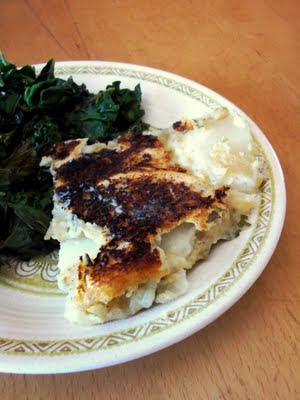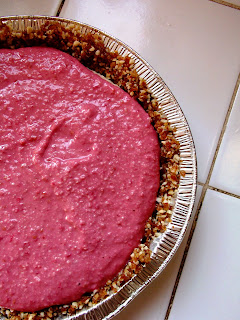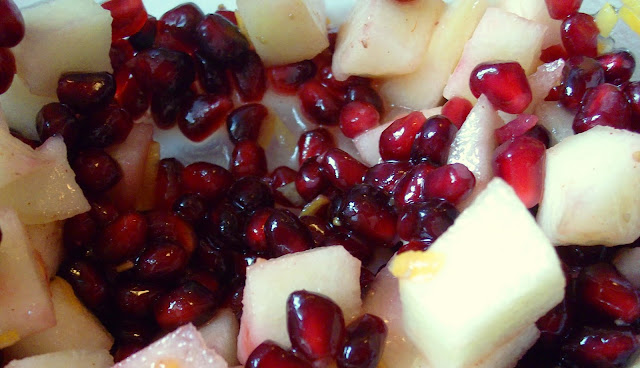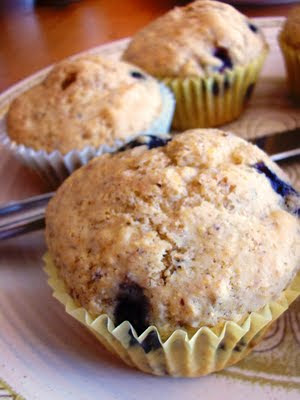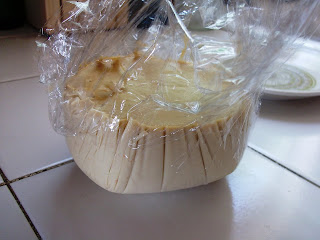Last week I threw a little dinner party for some nonvegans and got a bit carried away. I think part of the reason I got so excited about vegan cooking in the first place was the challenge of it. Add to that some guests who didn't want to eat gluten or vinegar, and hey, while we're at it, I thought, why don't I avoid nightshades, too?
It ended up being a four-course meal:
Green Salad with Green Beans, Radish, and Grapefruit-Lime Vinaigrette
Frozen Raspberry Cashew Cake (below!)
*
Apparently "palate cleanser" near-excuses "boring" (cf. "green salad..."). But onto cake.
This cake--I don't want to call it cheesecake, although it's clearly cheesecake-inspired--is raw and gluten free. Um, yay. It's also just delicious.

Sooo you got yer crust: it's just dates and almonds (and salt). There's a strawberry-chocolate pie in
The Joy of Vegan Baking (wow, just realized I
never use that cookbook anymore) that has a crust like this too; it's pretty magical how simple it is. I think a little cinnamon or nutmeg or cloves might be nice in there, too.
The creamy filling uses coconut oil. I realized that nothing else was going to do, so I finally bought my first jar. And actually, at Whole Foods, it wasn't as bad for the wallet as I thought it would be. This large jar was $7, and it's a whole lot of fat in there.
This recipe only used 1/3 cup. The stuff looks a TON like
Crisco, that now-much-maligned shortening in a tub that was a constant staple in the kitchen when I was little. I think the coconut oil has a slightly lower melting point, though, because it was really hot in my kitchen and it started melting... so "solid at room temperature" definitely depends on what room we're talking about. I got the "refined" kind, which has a higher smoking point and no coconut odor/flavor. I kept expecting (and wishing) it would smell coconutty, though.
This is a cake you really have to plan in advance for. First, you need to soak the cashews at least 5 hours before making the filling. Then, after you assemble the pie, you need it to firm up in the freezer. And then, unless you time it perfectly, it needs to
leave the freezer for a short while to get slightly softer again. Yeah... no guar gum here, but the fact that coconut oil gets softer when it's warmer helps here.
Filling, layer one:

+
=
I was a bit nervous about this cake, because I had to use my mini-food-processor, in which I often make pestos or onion pastes. In fact, I had
just used it for that in making the onion paste for the
Green Pea Soup. And I'm all too aware of how quickly the smallest hint of onion or garlic can ruin a sweet thing (cf.
Almond Butter Cream). But I soaked all the components in baking soda and water, then washed them thoroughly with soap, and it was fine. It just took a LOT of grinding in my sad little food processor to get it creamy enough.
The finished product was really tasty. There was a lot of lemon juice to make it tangy, but vanilla and raspberries were also well represented. I think 1/3 c agave was actually a bit too much (I'm an agave newbie and skeptic; I recently had
a confrontation with it on this blog). Still, this dessert was deceptively light and refreshing. In fact, to say that it serves 8-10 feels like a bit of a stretch because we cut it in 8 pieces and could have definitely had larger pieces. Yum.
I don't have a spring-form pan, so I used an 8-in aluminum (disposable) pie pan, because you can bend it to get the fragile pie out more easily.
Frozen Raspberry Cashew Cake
Ingredients
Crust
1/2 c raw almonds (pecan or walnuts will also work)
1/2 c soft
Medjool dates (the dates I found at
Jons were
Deglet Noor dates from Tunisia; I pre-chopped them for easier processing)
1/4 tsp sea salt
consider also: cinnamon, nutmeg, or cloves
*
Filling
1.5 c raw cashews, soaked in water for at least 5 hours, overnight is best
juice of 2 lemons
the seeds of 1 whole vanilla bean (or 1 tsp alcohol-free vanilla extract)
1/3 c raw coconut oil
1/3 c agave nectar (or honey if not vegan)
1 c raspberries (thaw completely if using frozen)
Instructions
1. Place nuts and dates in a food processor with sea salt and pulse to chop until they are to your desired fineness (process a finer crust longer than a chunky one). Test the crust by spooning out a small amount of mixture and rolling it in your hands. If the ingredients hold together, your crust is perfect. Scoop out crust mixture in a 7” spring-form pan (if you don’t have a spring-form pan, use a pie plate lined with saran wrap--
see notes above), and press firmly, making sure that the edges are well packed and that the base is relatively even throughout. Rinse food processor well.
2. Warm coconut oil and agave nectar in a small saucepan on low heat until liquid. Whisk to combine.
3. In the most powerful food processor / blender you own (you decide which one has the most torque) place all filling ingredients (except raspberries) and blend on high until very smooth (this make take a couple minutes so be patient). If you have a Vita-Mix, absolutely use it.
4. Pour about 2/3 (just eyeball it, you can’t make a mistake!) of the mixture out onto the crust and smooth with a spatula. Add the raspberries to the remaining filling and blend on high until smooth. Pour onto the first layer of filling. Place in freezer until solid.
5. To serve, remove from freezer at least an hour prior to eating. Run a smooth, sharp knife under hot water and cut into slices. Serve on its own, or with fresh fruit. Store leftovers in the freezer if it will be a while until you eat it, but if you will eat it the following day, the fridge is great! (what leftovers?
seriously)
Serves 8-10.
 Polenta was the real exciting discovery. A random buy from Trader Joe's one day, this inexpensive, shelf-stable golden tube had been sitting around for weeks. I sliced it, browned it in olive oil, and then served the crispy and succulent slices with some of the leftover enchilada sauce I'd found in my freezer. I'd forgotten how amazing this sauce was--cumin, marjoram, and, most of all, smoky chipotles en adobo give this sauce incredible depth of flavor. Here, that flavor was really well complemented by the textures and the mild sweetness of the polenta. We ate it all.
Polenta was the real exciting discovery. A random buy from Trader Joe's one day, this inexpensive, shelf-stable golden tube had been sitting around for weeks. I sliced it, browned it in olive oil, and then served the crispy and succulent slices with some of the leftover enchilada sauce I'd found in my freezer. I'd forgotten how amazing this sauce was--cumin, marjoram, and, most of all, smoky chipotles en adobo give this sauce incredible depth of flavor. Here, that flavor was really well complemented by the textures and the mild sweetness of the polenta. We ate it all.






